In case you haven’t been keeping up with the latest gaming news there is a new strategy card game creating a lot of buzz. Legends of Runeterra is that game, and the ‘buzz’ is well-earned. Developed and published by Riot Games, Legends of Runeterra (LoR) pulls characters and lore from their already established MOBA title, League of Legends, much how Hearthstone initially based its foundation on World of Warcraft. If you were lucky enough to participate in the preview patch event this week, you’ll agree this is a title to keep your eyes on.
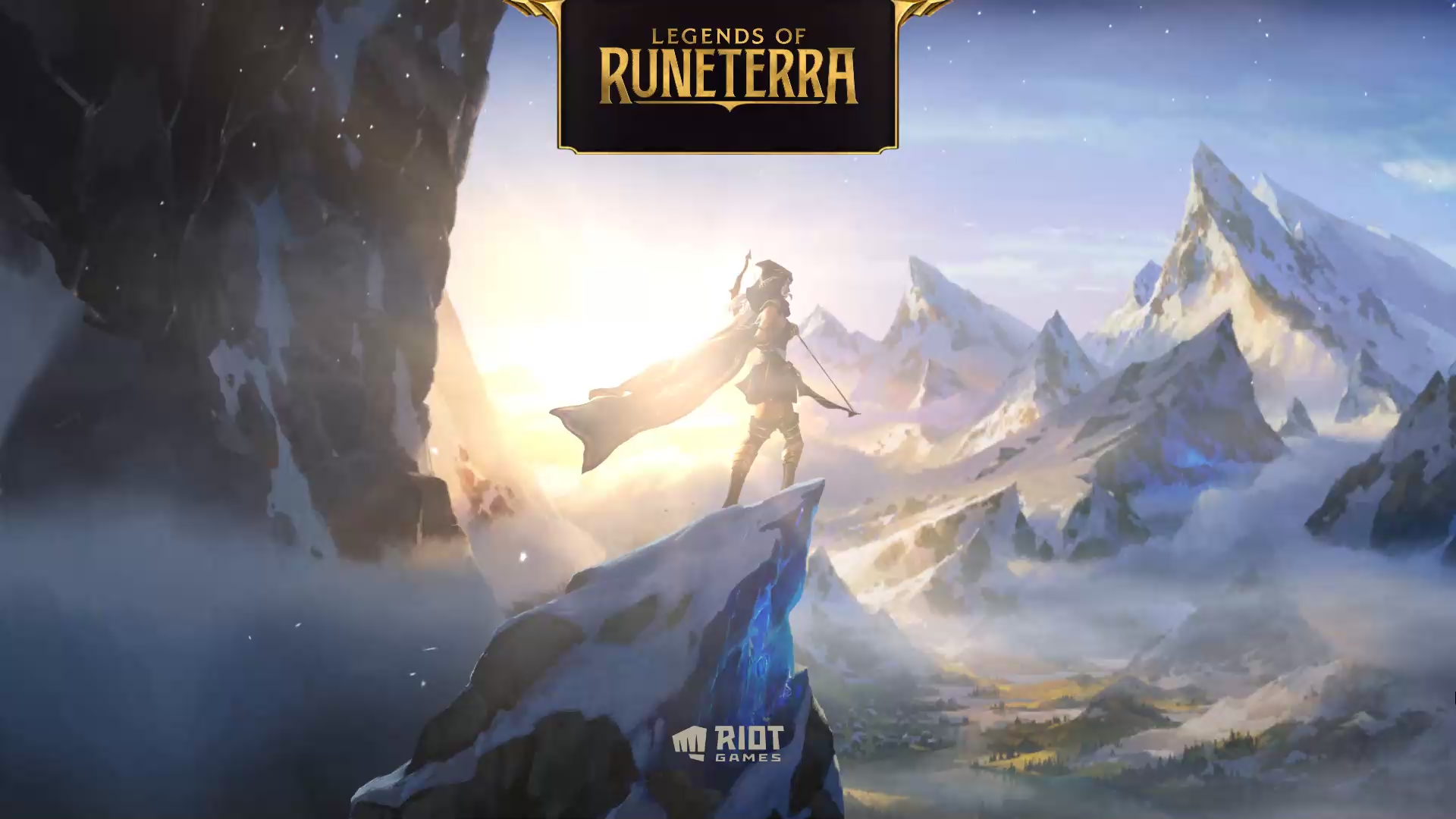
One of the first things I noticed when logging into LoR was how beautiful and polished it looked, especially for a game that hasn’t even made it into the Beta testing phase. I have never played League of Legends (LoL) and wasn’t sure if I would be completely lost stepping into this new world. I’m happy to say that the two games are mutually exclusive, and you don’t get punished for not knowing the lore behind the characters. I’ve played a LOT of digital card games over the years and I was ready to give this one a test drive and see how it compared (spoiler alert: the phrase “shut up and take my money” should give you some insight to my initial reaction).
The home screen has only a handful of options, but it is uncluttered and easy to navigate where you need to go. The first time you login you’ll start with a series of tutorials to introduce the basic mechanics of the game and get familiar with the controls. Once you finish that you can continue with more advanced tutorials or jump right into a game. You automatically start with several pre-built decks as part of your collection and you can choose to play against other players or the AI.
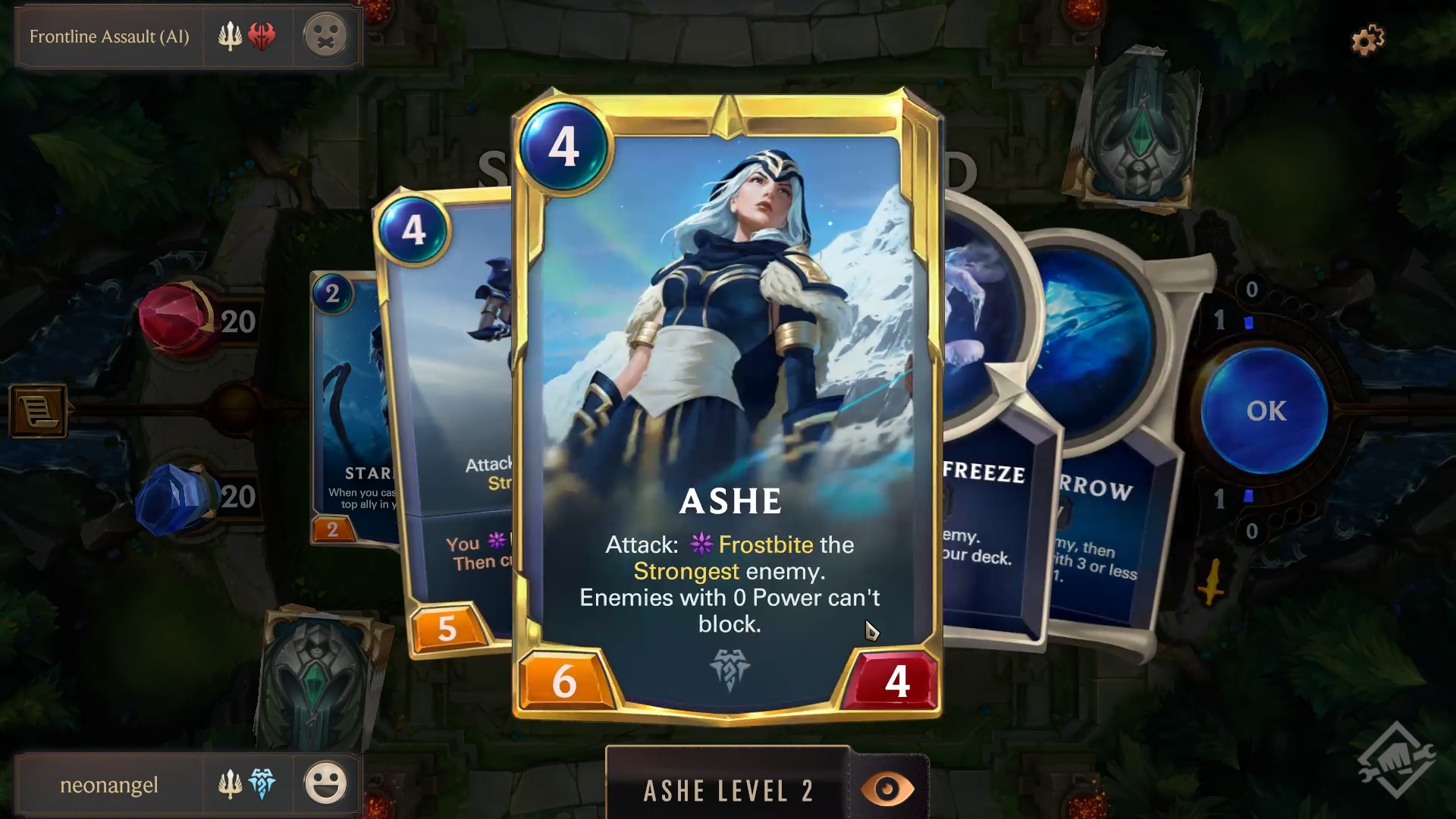
Deckbuilding can be a bit overwhelming when starting a new game, but LoR does its best to try and make it easy to filter and find the cards you need. The cards follow a typical design that include Mana Cost, Attack, Health, and special abilities that are easy to understand. You can hover over any keyword to get a definition and if you right-click on a card you can view it in detail, or in the case of Champions you’ll see each level and any special cards that come with it. There are currently 6 different regions to choose from and Riot has already said they will be adding more going forward. The regions all have different playstyles, offering various deck combinations to choose from. A key component of your deck is the Champion(s) you choose. These are powerful characters that get even stronger after a “Level Up” condition is met, unleashing astounding cut scenes when you have done so. You can include 6 Champions in each deck, so choose wisely.
A huge departure from other games in this genre is the fact that there are no randomized packs for sale. Their philosophy is that everyone should be able to access the cards they want without leaving purchases to chance. You will be able to obtain cards via Shards (earned by playing) or by Coins (purchased with money) and all of the cards can be added to your collection this way. You can also set your reward structure for a specific region, which will get you rewards for the types of deck you want much faster. It doesn’t hurt that all the games you play, win or lose, will contribute points to the Weekly Vault that contains Shards and cards.
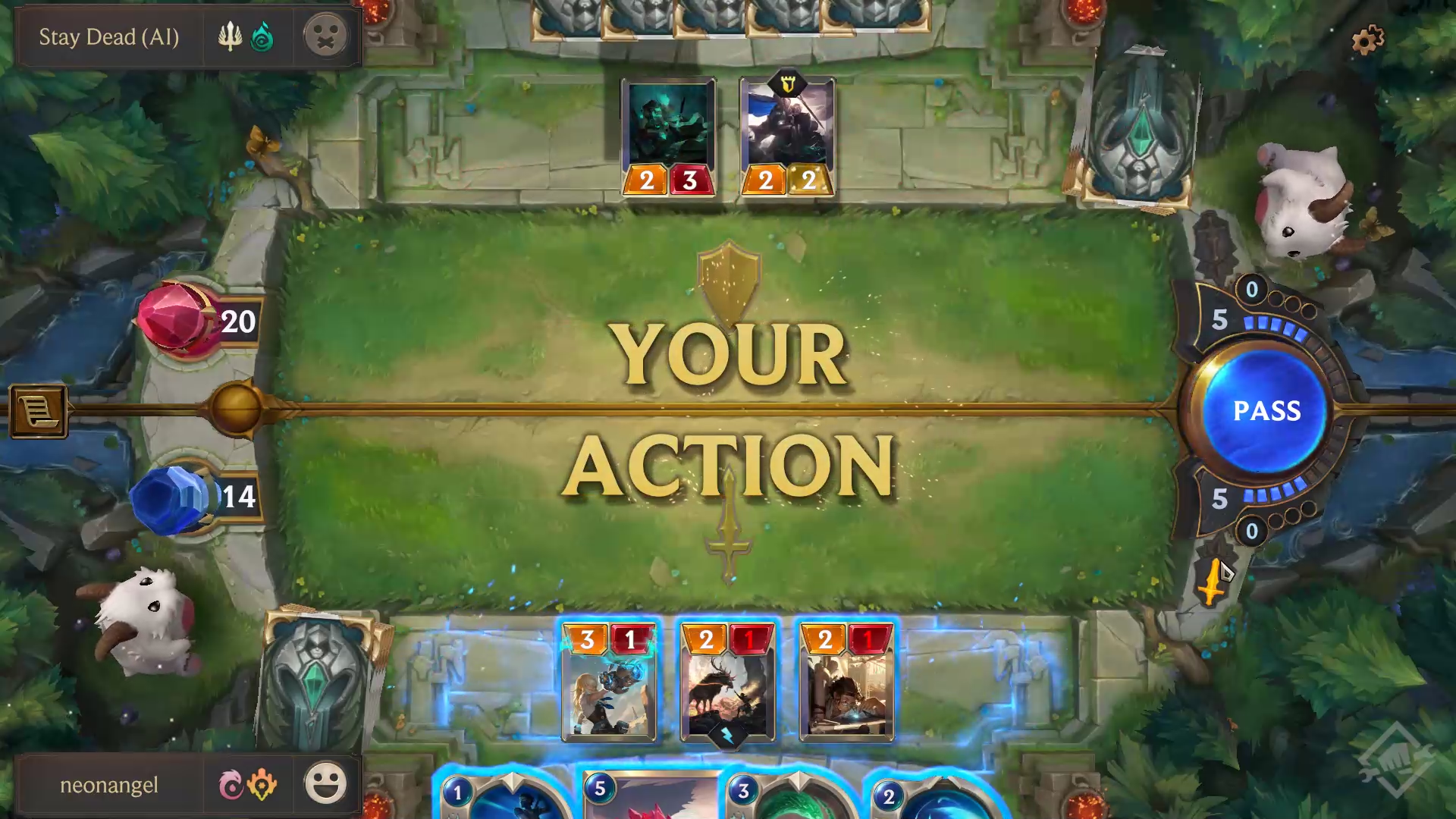
Once you hit the battlefield you initially draw 4 cards and mulligan to choose which ones to redraw, if any. You’ll find some familiar objects, like a mana bar, life total, and deck. One thing that may seem different are lanes that alternate between Attack and Defense phases for you and your opponent. This ends up being similar to how Magic: The Gathering is played with players being able to respond to the board and what’s happening on each other’s turns. You also get to choose where to block when you are defending, unless your opponent has a “Challenger” ability which allows them to force a character to block it. You can only choose one blocker per attacker, so no piling up on one threat. Luckily, damage is persistent, so you can whittle down larger cards over multiple turns unless they manage to heal themselves. Another important distinction from other games is there is no summoning sickness for units. As long as it’s your Attack phase or you have an Attack token you can charge into battle with fresh recruits that just hit the board.
The goal is to get the opponent’s Nexus down to 0 Health, unless you circumvent the rules with Champions like Fiora, who automatically wins the game after killing 4 enemies and surviving. You cannot hope to succeed with units alone, but you’ll want to have some spells in there too. There are three speeds for spells: Slow (think Sorcery in MTG), Fast (another MTG reference of Instant), and Burst, which is instantaneous and cannot be responded to. Any mana that doesn’t get used (up to 3) at the end of a round gets transferred to a special mana bank specifically to be used for Spells. It’s good to have a mix in your deck, but you’ll definitely want to be able to respond to your opponent during their Attack phase if you want to gain the upper hand.
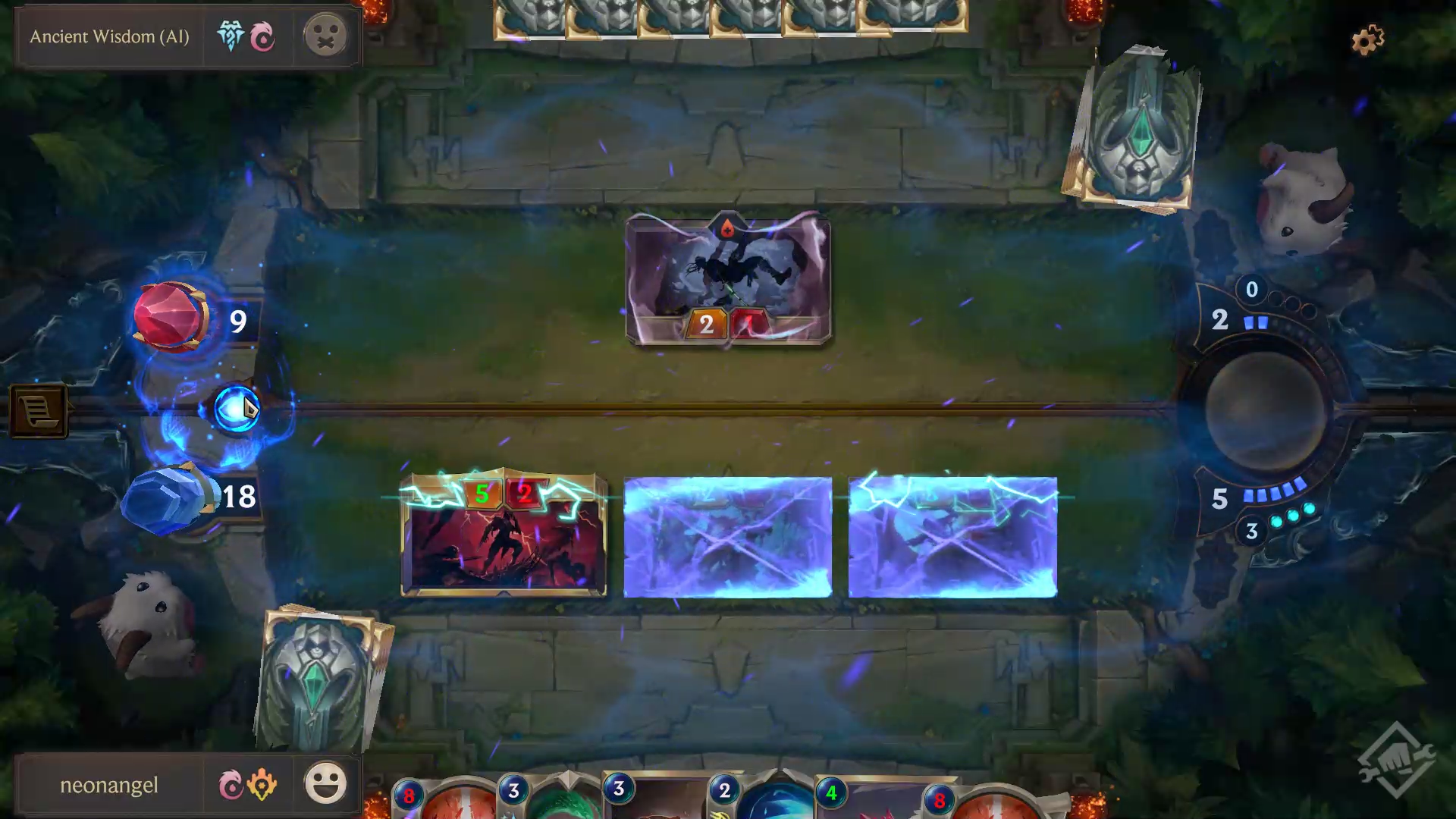
Some things I was pleasantly surprised by were the log, where you can see every action for the entire game. Other games have this feature, but normally only show a limited amount of actions. I also really appreciate the “Oracle’s Eye”, next to the Nexus, which shows you damage calculations for the current Attack or Defense formations before you commit to it. Another fun feature was the emojis. They brilliantly allow you to greet/taunt your opponent with animated pictures, rather than boring text. I have to say Riot has done an amazing job with the game so far and in the next preview patch they will be testing their Expedition format, which is their draft equivalent. I’m certainly looking forward to it! If you’d like to try out Legends of Runeterra too, be sure to pre-register at PlayRuneterra.com.
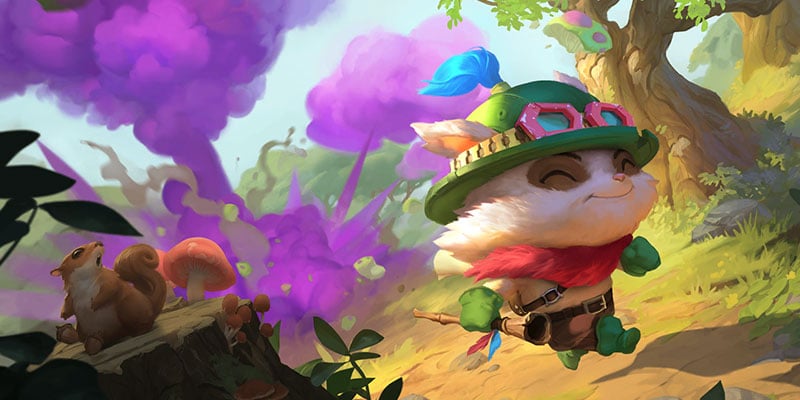
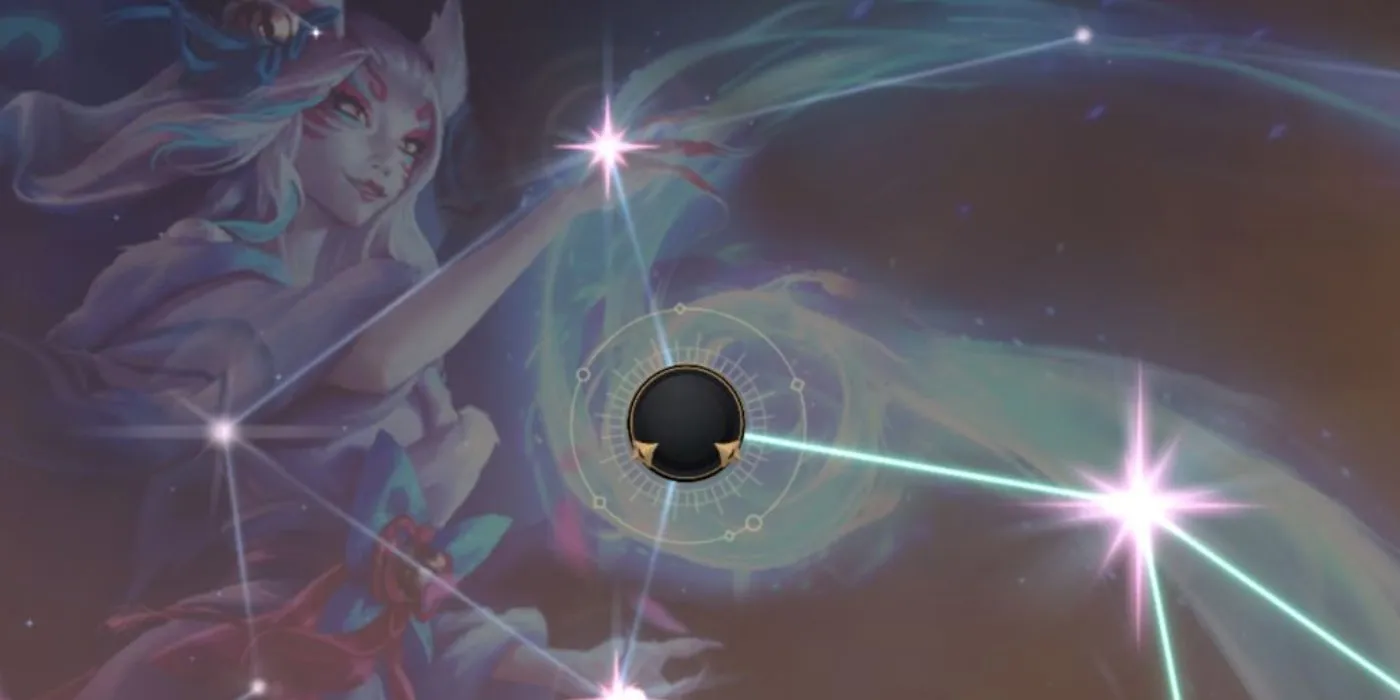
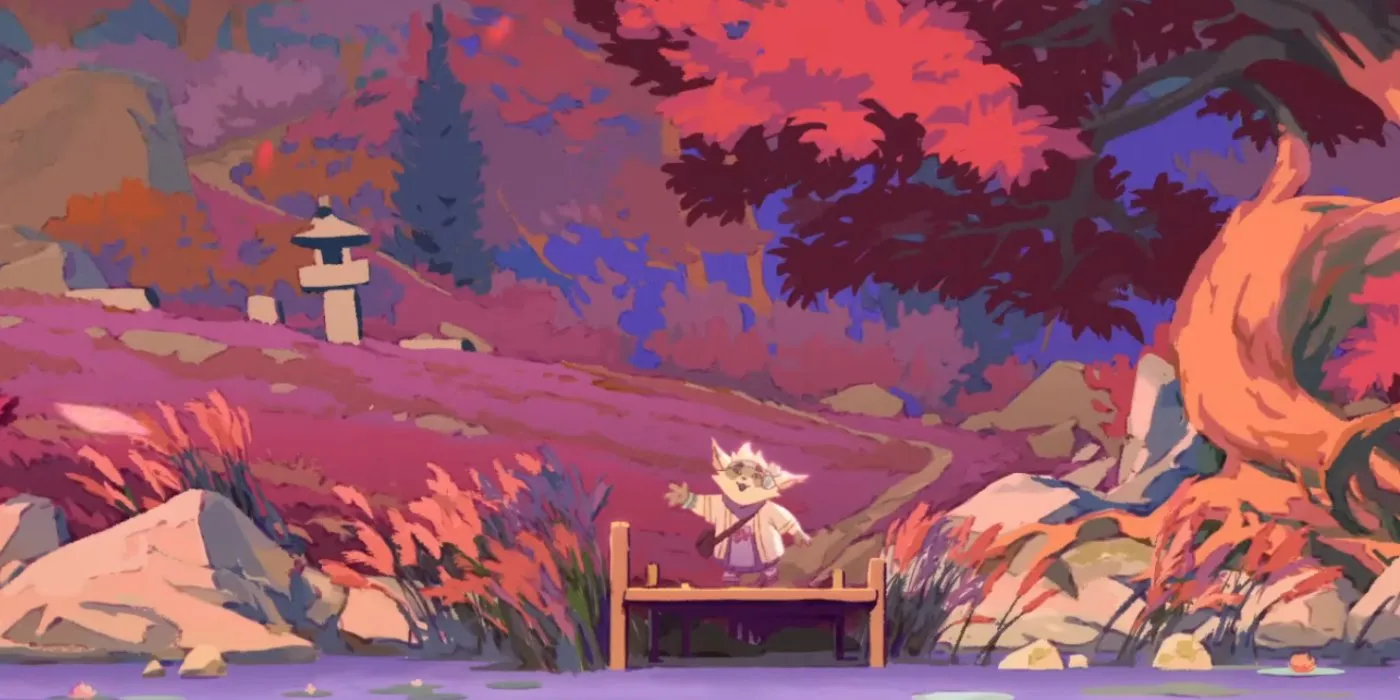
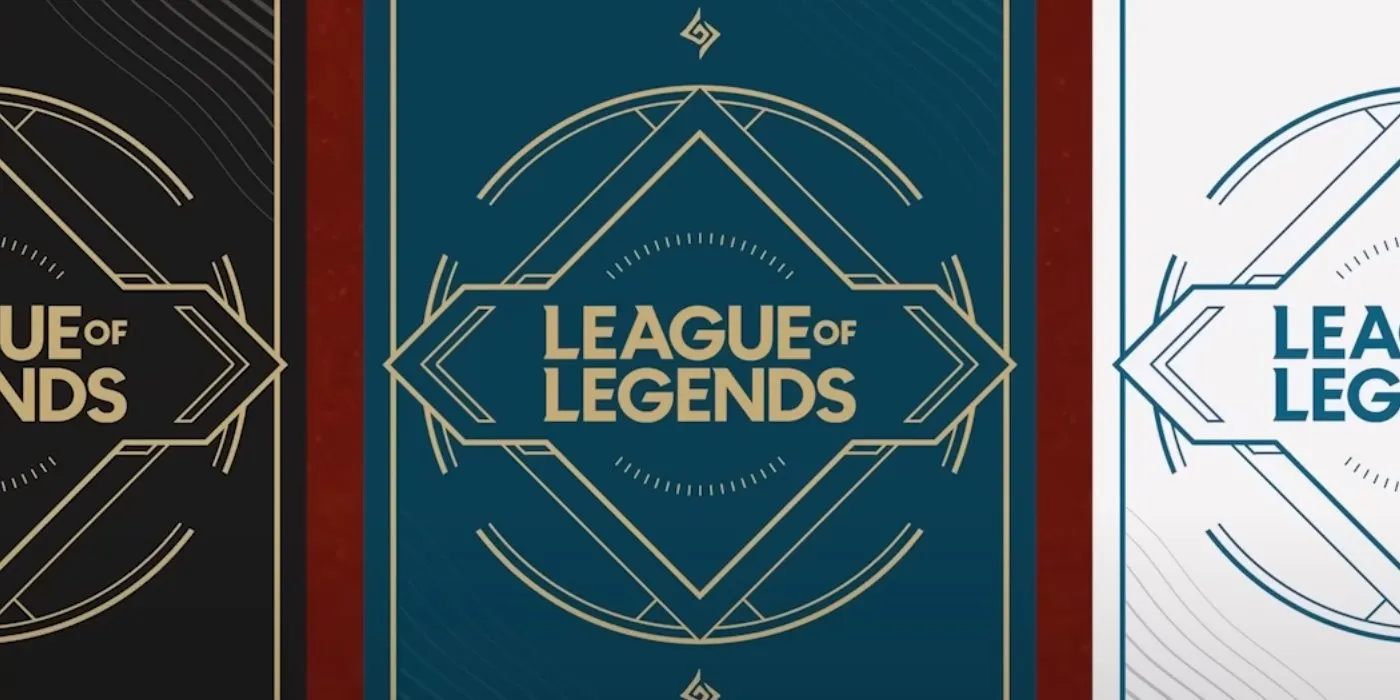
Comments
I finally got. My own key today and I really have to say that riot has done a good job up till now.
But there are two things that bug me a little bit.
1. The whole attack/defend phase thing. Of course that way it feels a lot more balanced than HS ( hello ds+if combo), but it makes the game feel clunky sometimes in my opinion.
2. And that's really just a matter of aestetics, but all those animations are too much. as beautiful as they are, after the 100th animation it feels annoying.
Maybe I'm just getting old...
BUT all in all, the game feels fresh. And that's much appreciated.
I haven't played myself yet (no key *cry*).
But from watching lots of videos I have to agree with 2.
But I'm also old.
I had an opportunity to test this game since last friday. I had fun and game felt quite polished for a beta. Definately look forward to this one
The test was not even a beta, it was just a preview (and it looked more polished than many freshly launched titles).
Beta will start Q1 2020.
I've just recieved a closed beta invitation: starting from tomorrow I'll be happy to dive deep into it. I really need some fresh air this days.
I've been playing LoR the last couple of days because I was lucky enough to get one of the twitch drops and man is it fun. I'm so sad that I will have to say goodbye to the game tomorrow. But, I'm looking forward to the full release and future LoR coverage here on the site. Also a side note: I've never played League but I'm already in love with all these characters and the world of Runeterra, because of this game!
Looking good!
My man!
Is it just me, or did winnie the pooh stopped appearing now that a riot game is being featured here?
No correlation at all. It was put in the footer as a comment towards Blizzard and I decided to remove it to regain the space.
You mean a game and company 100% China owned?
Now cover Elder Scrolls: Legends, Horus Heresy: Legions, and Gwent.
You should have asked for a Gwent section in the midst of Blitzchung controversy, it would have been so fitting with the whole Witcher3' meme
TESL is a possibility.
Wel done out of cards has out done it self once again. Just another step towards the main goal: to be a website where card game fans can come and browse around for their favorite digital TCG.
I know now is the time to put your chips in for LoR but i look forward for in the next 18 months this site can expand on other digital TCG.
For now i understand that the hype for LoR is real specially considering the popular brand of LoL but i hope it isnt just another TCG. Best of luck